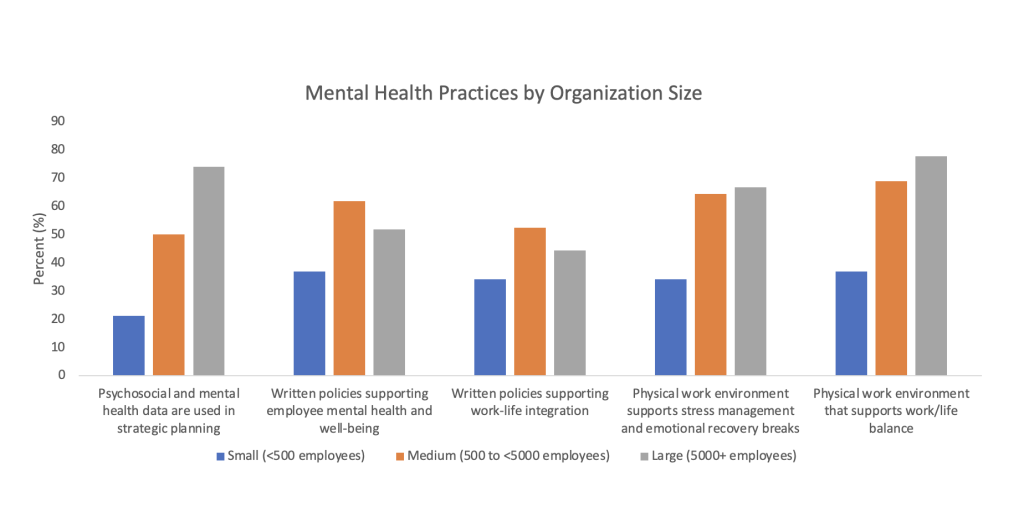 Mary Imboden is the Director of Research at the Health Enhancement Research Organization (HERO), where she oversees the research agenda, research committees, and the HERO Health and Well-being Best Practices Scorecard in Collaboration with Mercer©. Mary is also the Chair and an assistant professor of the Kinesiology Department at George Fox University, where she leads the Find your Fit program, an employee health and well-being initiative. Mary obtained her doctorate in Human Bioenergetics with an emphasis in Clinical Exercise Physiology from Ball State University’s Human Performance Lab and her Master’s degree in Health and Exercise Science from Wake Forest University.
Mary Imboden is the Director of Research at the Health Enhancement Research Organization (HERO), where she oversees the research agenda, research committees, and the HERO Health and Well-being Best Practices Scorecard in Collaboration with Mercer©. Mary is also the Chair and an assistant professor of the Kinesiology Department at George Fox University, where she leads the Find your Fit program, an employee health and well-being initiative. Mary obtained her doctorate in Human Bioenergetics with an emphasis in Clinical Exercise Physiology from Ball State University’s Human Performance Lab and her Master’s degree in Health and Exercise Science from Wake Forest University.
During the pandemic, the number of cases of mental health disorders has skyrocketed, leading employers to become increasingly aware of the workplace’s impact on all aspects of every employee’s health and well-being1. Dramatic increases in burnout and mental health concerns have further underscored the need for employers to address employee mental health and overall well-being by evaluating, expanding, and improving benefits, access to programs, and initiatives.
The mission of the Health Enhancement Research Organization (HERO) is to connect science and practice to demonstrate the value of workplace health and well-being. The HERO Health and Well-being Best Practices Scorecard in Collaboration with Mercer© (HERO Scorecard) is a free online assessment that was designed as an educational and benchmarking tool to help employers identify and assess their use of practices that support more effective health and well-being initiatives. Given the growth in knowledge and research on health and well-being best practices, Version 5.0 of the Scorecard was launched in 2021 to reflect new and emerging practices to help employers be responsive to the evolving trends in workplace health and well-being. These new practices include adequately addressing mental and emotional health through strategic planning, organizational and cultural support, programs, and measurement and evaluation.
This commentary assesses the prevalence of workplace mental and emotional health and well-being best practices in organizations of varying sizes. Data were explored from 107 unique organizations that completed Version 5.0 of the HERO Scorecard in full between December 1, 2020 and December 31, 2021 and provided data on total number of employees. Organizations were grouped into small (<500 employees; n=38), medium (500 to <5,000 employees; n=42), and large (5,000+ employees; n=27) organizations for benchmarking purposes.
Results
Data on mental and emotional health best practices were pulled from the strategic planning, organizational and cultural support, programs, and measurement and evaluation sections of the Scorecard. The strategic planning section asks what types of data are used in strategic planning for a company’s health and well-being initiative. Psychosocial and mental health data are used in strategic planning of the health and well-being initiative in 21.1% of small organizations, 50.0% of medium organizations, and 74.1% of large organizations.
In the organizational and cultural support section, results showed that 36.8% of small, 61.9% of medium, and 51.9% of large organizations have written policies supporting employee mental health and well-being. Additionally, 34.2% of small, 52.4% of medium, and 44.4% of large organizations have written policies supporting work-life integration. When asked if their company’s physical work environment supports stress management and emotional recovery breaks, 34.2% of small, 64.3% of medium, and 66.7% of large organizations responded affirmatively. Further, 36.8% of small organizations, 69.0% of medium organizations, and 77.8% of large organizations reported having a physical work environment that supports work/life balance.
 The programs section inquires about the types of health and well-being issues an organization’s health and well-being initiative addresses. Results showed that the well-being initiative of 60.5% of small organizations, 92.9% of medium organizations, and 100% of large organizations addresses mental and emotional health issues. Further, 26.3% of small, 59.5% of medium, and 70.4% of large organizations’ well-being initiatives address social and relational well-being.
The programs section inquires about the types of health and well-being issues an organization’s health and well-being initiative addresses. Results showed that the well-being initiative of 60.5% of small organizations, 92.9% of medium organizations, and 100% of large organizations addresses mental and emotional health issues. Further, 26.3% of small, 59.5% of medium, and 70.4% of large organizations’ well-being initiatives address social and relational well-being.
Finally, in the measurement and evaluation section, organizations are asked about the types of data used to evaluate health and well-being initiative performance. Psychosocial/mental health data are used in 15.8% of small organizations, 40.5% of medium organizations, and 66.7% of large organizations to evaluate their health and well-being initiative performance.
While we know there are discrepancies between small, mid-size, and large organizations in the workplace health and well-being practices offered, the discrepancies presented here are cause for concern. Given that >90% of organizations in the United States are small to mid-size, a large percentage of US employees may not be feeling supported in their mental and emotional health needs at work. Further, depression, anxiety, stress, burnout, etc. are continuing to rise, so it is critical that organizations more systematically address mental and emotional health in their health and well-being initiatives. The HERO Scorecard Version 5.0 could be a great tool for organizations that want to better understand how to support their employee’s mental and emotional health. After taking the Scorecard, respondents receive an instant report along with resources and recommendations that can be used by organizations to aid in the strategic planning of their workplace health and well-being initiatives to improve the mental and emotional health and well-being of their employees.
- Moreira T, Wallace K, Jain R, Maletic V. Psychiatry and mental health during COVID: unmet needs of healthcare providers and patients. Presented at: Psych Congress 2021; October 29-November 1, 2021; San Antonio, Texas. Poster 80.

Comments are closed.
Such interesting new research from HERO. Thanks for sharing the trends in workplace mental health from the employer’s perspective and finding significant differences by the size of the company. This same pattern is found in how many employers have employee assistance programs (EAP). According to the most recent national random sample study of employers in the United States (Bureau of Labor Statistics, 2021 March), most employers have an EAP, but this status varies by the size of the company and sector. About 8 out of every 10 employees in the public sector have access to an EAP, with all employees in the federal government, 94% of state governments, and 74% of local governments offering an EAP. In the private sector, 84% of large businesses (with 500 or more employees), 68% of medium-size employers, and 33% of small employers (under 100 employees) sponsor an EAP benefit. Great to see the growth in EAPs at smaller and medium-sized employers. All employers can do more to support workplace mental health. EAPs can help.